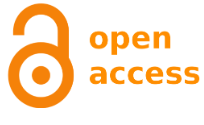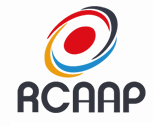Fruits and vegetables at the supply center of Bahia, Brazil: why not just supply, but also loss?
DOI:
https://doi.org/10.5433/1679-0359.2024v45n5p1391Keywords:
Food and nutrition security, Food systems, Postharvest loss, Supply, Sustainability.Abstract
Food loss is a global challenge with significant economic, environmental, and social implications. In Brazil, it is estimated that fruit and vegetable losses range between 30% and 35% from production to the final consumer. This study analyzed the extent of fruit and vegetable loss and its determinants at the Supply Center of the State of Bahia (CEASA-Bahia), Brazil, taking into account the diversity of sales establishments. A cross-sectional study with a quantitative approach was conducted using questionnaires administered to sellers at the Salvador Supply Center in Bahia, Brazil. The sample consisted of 132 sellers, representing three categories: stalls, stones, and boxes. Over 85% of the sellers had not received any training in food handling. Precarious facilities and insufficient conservation technologies were observed, with only 12.9% of sellers having refrigeration facilities. Although 56.1% of the sellers denied experiencing losses, a weekly loss of 26.30 t of vegetables and 127.4 t of fruit was estimated, representing 2.26% of the acquired amount. In absolute values, this corresponds to over 150 t of wasted food. There was no policy in place at the Center to prevent or reduce food loss, with only timid initiatives such as donations (28.8%) and discounts (6.8%). The findings highlight the potential for implementing programs aimed at preventing food losses.
Downloads
References
Abadi, B., Mahdavian, S., & Fattahi, F. (2021). The waste management of fruit and vegetable in wholesale markets: intention and behavior analysis using path analysis. Journal of Cleaner Production, 279, 123802. doi: 10.1016/j.jclepro.2020.123802
Anand, S., & Barua, M. K. (2022). Modeling the key factors leading to post-harvest loss and waste of fruits and vegetables in the agri-fresh produce supply chain. Computers and Electronics in Agriculture, 198, 106936. doi: 10.1016/j.compag.2022.106936
Araújo, J. A., Esmerino, E. A., Alvarenga, V. O., Cappato, L. P., Hora, I. C., Silva, M. C., Freitas, M. Q., Pimentel, T. C., Walter, E. H. M., Sant'Ana, A. S., & Cruz, A. G. (2018). Development of a checklist for assessing good hygiene practices of fresh-cut fruits and vegetables using focus group interviews. Foodborne Pathogens and Disease, 15(3), 132-140. doi: 10.1089/fpd.2017.2342
Associação Brasileira das Centrais de Abastecimento (2023). Sobre a ABRACEN. https://abracen.org.br/abracen/
Bancal, V., & Ray, R. C. (2022). Overview of food loss and waste in fruits and vegetables: from issue to resources. In R. C. Ray (Ed.), Fruits and vegetable wastes: valorization to bioproducts and platform chemicals (pp. 3-29). Singapore.
Berchin, I. I., Nunes, N. A., Amorim, W. S. de, Zimmer, G. A. A., Silva, F. R. da, Fornasari, V. H., Sima, M., & Andrade Guerra, J. B. S. O. de. (2019). The contributions of public policies for strengthening family farming and increasing food security: the case of Brazil. Land Use Policy, 82, 573-584. doi: 10.1016/j.landusepol.2018.12.043
Central de Abastecimento da Bahia (2018). CEASA-BA gestão ambiental. Resumo de geração de resíduos na Ceasa Bahia.
Centro de Estudos e Debates Estratégicos (2018). Consultoria legislativa da câmara dos deputados. Perdas e desperdício de alimentos - estratégias para redução. Edições Câmara.
Companhia Nacional de Abastecimento (2018). Centrais de abastecimento: comercialização total de frutas e hortaliças. CONAB.
Correio 24 Horas (2021). Comerciantes relatam medo com mudanças na Ceasa: 'só Deus sabe como vamos ficar'. https://www.correio24horas.com.br/noticia/nid/comerciantes-relatam-medo-com-mudancas-na-ceasa-so-deus-sabe-como-vamos-ficar/
Costa, B. V. L., Cordeiro, N. G., Bocardi, V. B., Fernandes, G. R., Lisboa, S. C. P., Claro, R. M., & Kümmel, C. D. (2023). Food loss and food waste research in latin america: systematic review. Ciência & Saúde Coletiva.
Costa, F. H. O., Moraes, C. C. de, Silva, A. L. da, Delai, I., Chaudhuri, A., & Pereira, C. R. (2022). Does resilience reduce food waste? Analysis of Brazilian supplier-retailer dyad. Journal of Cleaner Production, 338, 130488. doi: 10.1016/j.jclepro.2022.130488
Da Costa, C. C., Guilhoto, J. J. M., & Burnquist, H. L. (2015). Impactos Socioeconômicos de Reduções nas Perdas Pós-colheita de Produtos Agrícolas no Brasil. Revista de Economia e Sociologia Rural, 53(3), 395-408. doi: 10.1590/1234-56781806-9479005303002
Dreyer, H. C., Dukovskaâ€Popovska, I., Yu, Q., & Hedenstierna, P. (2019). A ranking method for prioritising retail store food waste based on monetary and environmental impacts. Journal of Cleaner Production, 210, 505-517. doi: 10.1016/j.jclepro.2018.11.012
Eriksson, M., Strid, I., & Hansson, P. (2012). Food losses in six Swedish retail stores: wastage of fruit and vegetables in relation to quantities delivered. Resources, Conservation and Recycling, 68, 14-20. doi: 10.1016/j.resconrec.2012.08.001
Food and Agriculture Organization of the United Nations (2019). The state of food and agriculture - moving forward on food loss and waste reduction. http://www.fao.org/3/ca6030en/ca6030en.pdf
Food and Agriculture Organization of the United Nations (2023). El estado mundial de la agricultura y la alimentación 2023: revelar el verdadero costo de los alimentos para transformar los sistemas agroalimentarios. doi: 10.4060/cc7724es
Goodman-Smith, F., Mirosa, M., & Skeaff, S. (2020). A mixed-methods study of retail food waste in New Zealand. Food Policy, 92, 101845. doi: 10.1016/j.foodpol.2020.101845
Guarnieri, P., Aguiar, R. C. C., Thomé, K. M., & Morais Watanabe, E. A. de. (2021). The role of logistics in food waste reduction in wholesalers and small retailers of fruits and vegetables: a multiple case study. Logistics, 5(4), 77. doi: 10.3390/logistics5040077
Guerra, A. M. M., Santos, D. S., Silva, P. S., & Santos, L. B. (2018). Perfil dos consumidores e comerciantes de hortaliças em feira livre na cidade de Barra, BA. Tecnologia & Ciência Agropecuária, 12(4), 39-45. doi: 10.33448/rsd-v9i8.5532
Gustavsson, J., Cederberg, C., & Sonesson, U. (2011). Global Food losses and food waste: extent, causes and prevention. https://reliefweb.int/attachments/0fb5d845-b91d-32a5-86f6-f5d1550bc2d4/FAO%20Report%202011%20%281%29.pdf
High Level Panel of Experts on Food Security and Nutrition (2017). Nutrition and food systems. A report by the high level panel of experts on food security and nutrition of the committee on world food security, Rome. https://www.fao.org/documents/card/en/c/I7846E/
Hungria, M., & Siqueira, J. O. (2024). Onde a ciência nos levou e que caminhos pode nos ajudar a trilhar. In M. Hungria (Ed.), Segurança alimentar e nutricional: o papel da ciência brasileira no combate à fome (pp. 11-22). Rio de Janeiro.
Kenny, S., Stephenson, J., Stern, A., Beecher, J., Morelli, B., Henderson, A., Chiang, E., Beck, A., Cashman, S., Wexler, E., McGaughy, K., & Martell, A. (2023). From field to bin: the environmental impacts of U.S. Food waste management pathways. https://www.epa.gov/system/files/documents/2023-10/part2_wf-pathways_report_formatted_no-appendices_508-compliant.pdf
Lana, M. M., & Moita, A. W. (2019). Visual quality and waste of fresh vegetables and herbs in a typical retail market in Brazil. Horticultura Brasileira, 37(2), 161-171. doi: 10.1590/s0102-053620190206
Lebersorger, S., & Schneider, F. (2014). Food loss rates at the food retail, influencing factors and reasons as a basis for waste prevention measures. Waste Management, 34(11), 1911-1919. doi: 10.1016/j.wasman.2014.06.013
Lei No. 12.305 (2010). Política Nacional de Resíduos Sólidos; altera a Lei no 9.605, de 12 de fevereiro de 1998; e dá outras providências. http://www.planalto.gov.br/ccivil_03/_Ato2007-2010/2010/Lei/L12305.htm
Lima, D. M., Marsola, K. B., Oliveira, A. L. R. de, & Belik, W. (2022). Estratégias para reduzir o desperdício de frutas e hortaliças: a busca por sistemas atacadistas sustentáveis. Horticultura Brasileira, 40(3), 334-341. doi: 10.1590/s0102-0536-20220313
Lima, J. S., Amaral, R. F., Brito, A. V. C., Lima, P. V. P. S., & Mayorga, R. D. (2012). Caracterização do comércio da CEASA-CEARÁ. Ciências Humanas e Sociais Aplicadas, 4(2), 1-11.
Lima, J. S., Amaral, R. F., Brito, A. V. C., Lima, P. V. P. S., & Mayorga, R. D. (2013). Caracterização dos comerciantes da CEASA-CEARÁ. Sociedade e Desenvolvimento Rural, 7(4), 21-34.
Lima, D. M., & De Oliveira, A. L. R. (2021). Waste assessment in distribution and marketing logistics of horticultural products: evidence from Brazil. Revista de La Facultad de Ciências Agrárias UNCuyo, 53(1), 207-219. doi: 10.48162/rev.39.020
Loke, M. K., & Leung, P. (2015). Quantifying food waste in Hawaii's food supply chain. Waste Management & Research, 33(12), 1076-1083. doi: 10.1177/0734242x15607427
Magalhães, V. S., Ferreira, L. S., & Silva, C. (2021). Using a methodological approach to model causes of food loss and waste in fruit and vegetable supply chains. Journal of Cleaner Production, 283, 124574. doi: 10.1016/j.jclepro.2020.124574
Medronho, R. A., Bloch, K. V., Luiz, R. R., & Werneck, G. L. (2009). Epidemiologia. Atheneu.
Mena, C., Terry, L. A., Williams, A., & Ellram, L. (2014). Causes of waste across multi-tier supply networks: Cases in the UK food sector. International Journal of Production Economics, 152, 144-158. doi: 10.1016/j.ijpe.2014.03.012
Moraes, C. C. de, Oliveira Costa, F. H. de, Silva, A. L. da, Silva César, A. da, Delai, I., & Pereira, C. R. (2022). Causes and prevention practices of food waste in fruit and vegetable supply chains: how is Brazil dealingwith these issues? Waste Management, 154, 320-330. doi: 10.1016/j.wasman.2022.10.021
Nascimento, V. F., Sobral, A. C., Andrade, P. R., & Ometto, J. P. (2015). Evolução e desafios no gerenciamento dos resíduos sólidos urbanos no Brasil. Revista Ambiente & Água, 10(4), 890-902. doi: 10.4136/ambi-agua.1635
Özbük, R. M. Y., & ÇoÅŸkun, A. (2020). Factors affecting food waste at the downstream entities of the supply chain: a critical review. Journal of Cleaner Production, 244, 118628. doi: 10.1016/j.jclepro.2019.118628
Pechtoll, J. L. (2011). A segurança alimentar no contexto das CEASAS. In F. Bicalho, & C. Bicalho (Eds.), Manual operacional das CEASAs do Brasil (pp. 193-203). Belo Horizonte.
Rajabi, S., Lashgarara, F., Omidi, M., & Hosseini, S. J. F. (2015). Quantifying the grapes losses and waste in various stages of supply chain. Biological Forum - An International Journal, 7(1), 225-229.
Rajapaksha, L., Gunathilake, D. C., Pathirana, S., & Fernando, T. (2021). Reducing post-harvest losses in fruits and vegetables for ensuring food security - Case of Sri Lanka. MOJ Food Processing & Technology, 9(1), 7-16. doi: 10.15406/mojfpt.2021.09.00255
Rede Brasileira de Pesquisa em Soberania e Segurança Alimentar e Nutricional (2022). II inquérito nacional sobre insegurança alimentar no contexto da pandemia da Covid-19 no Brasil. Fundação Friedrich Ebert.
Santos, C. M., Abbade, E. B., & Fai, A. E. C. (2023). Assessing land, nutrients and monetary value associated with postharvest loss of persimmon in Brazil: pathways toward sustainability in agri-food systems. British Food Journal, 125(12), 4357-4371. doi: 10.1108/bfj-10-2022-0895
Santos, S. F. D., Cássia Vieira Cardoso, R. de, Borges, Í. M. P., Almeida, A. C. E., Andrade, E. S., Ferreira, I. O., & Ramos, L. D. C. (2020). Post-harvest losses of fruits and vegetables in supply centers in Salvador, Brazil: analysis of determinants, volumes and reduction strategies. Waste Management (Elmsford), 101, 161-170. doi: 10.1016/j.wasman.2019.10.007
Scholz, K., Eriksson, M., & Strid, I. (2015). Carbon footprint of supermarket food waste. Resources, Conservation and Recycling, 94, 56-65. doi: 10.1016/j.resconrec.2014.11.016
Shahzad, M., Ali, A., Qureshi, A. H., Jehan, N., Ullah, I., & Khan, M. (2013). Assessment of post-harvest losses of plum in Swat, Pakistan. Pakistan Journal of Agricultural Research, 26(3), 1-10.
Silva, F. D. C. G., Jr., Menezes, C. A. de, Araújo Cavalcante, W. de, Aragão, O. P., Zaiat, M., & Leitão, R. C. (2022). Characterization of fruits and vegetables waste generated at a central horticultural wholesaler: a case study for energy production via biogas. Industrial Biotechnology, 18(4), 235-239. doi: 10.1089/ind.2021.0032
Spagnol, W. A., Silveira, V., Pereira, E., & Guimarães Filho, N. (2018). Redução de perdas nas cadeias de frutas e hortaliças pela análise da vida útil dinâmica. Brazilian Journal of Food Technology, 21, e2016070. doi: 10.1590/1981-6723.07016
Swinburn, B., Kraak, V., Allender, S., Atkins, V., Baker, P., Bogard, J. R., Brinsden, H., Calvillo, A., De Schutter, O., Devarajan, R., Ezzati, M., Friel, S., Goenka, S., Hammond, R. A., Hastings, G., Hawkes, C., Herrero, M., Hovmand, P. S., Howden, M., ... Dietz, W. H. (2019). The global syndemic of obesity, undernutrition, and climate change: the lancet commission report. Lancet, 393(10173), 791-846. doi: 10.1016/s0140-6736(18)32822-8
United Nations (2015). Transforming our world: the 2030 agenda for sustainable development. https://sdgs.un.org/sites/default/files/publications/21252030%20Agenda%20for%20Sustainable%20Development%20web.pdf
United Nations (2020). Ano internacional das frutas e vegetais: diversidade dos alimentos é essencial para a alimentação. https://brasil.un.org/pt-br/105688-ano-internacional-das-frutas-e-vegetais-diversidade-dos-alimentos-e-essencial-para
United Nations (2022). World population prospects 2022: summary of results. United Nations Publication.
United Nations Department of Economic and Social Affairs (2019). World population prospects 2019: highlights. United Nations Publication.
Xue, L., Liu, G., Parfitt, J., Liu, X., Van Herpen, E., Stenmarck, Ã…., O'Connor, C., Östergren, K., & Cheng, S. (2017). Missing food, missing data? A critical review of global food losses and food waste data. Environmental Science & Technology, 51(12), 6618-6633. doi: 10.1021/acs.est.7b00401
Zaro, M. (2018). Desperdício de alimentos: velhos hábitos, novos desafios. EDUCS.
Downloads
Published
How to Cite
Issue
Section
License
Copyright (c) 2024 Márcio Vasconcelos Luckesi, Adriana Lúcia da Costa Souza, Denise Nunes Viola, Pedro Paulo Lordelo Guimarães Tavares, Sandra Cristina Carvalho Oliveira, Ryzia de Cassia Vieira Cardoso

This work is licensed under a Creative Commons Attribution-NonCommercial 4.0 International License.
Semina: Ciências Agrárias adopts the CC-BY-NC license for its publications, the copyright being held by the author, in cases of republication we recommend that authors indicate first publication in this journal.
This license allows you to copy and redistribute the material in any medium or format, remix, transform and develop the material, as long as it is not for commercial purposes. And due credit must be given to the creator.
The opinions expressed by the authors of the articles are their sole responsibility.
The magazine reserves the right to make normative, orthographic and grammatical changes to the originals in order to maintain the cultured standard of the language and the credibility of the vehicle. However, it will respect the writing style of the authors. Changes, corrections or suggestions of a conceptual nature will be sent to the authors when necessary.


















